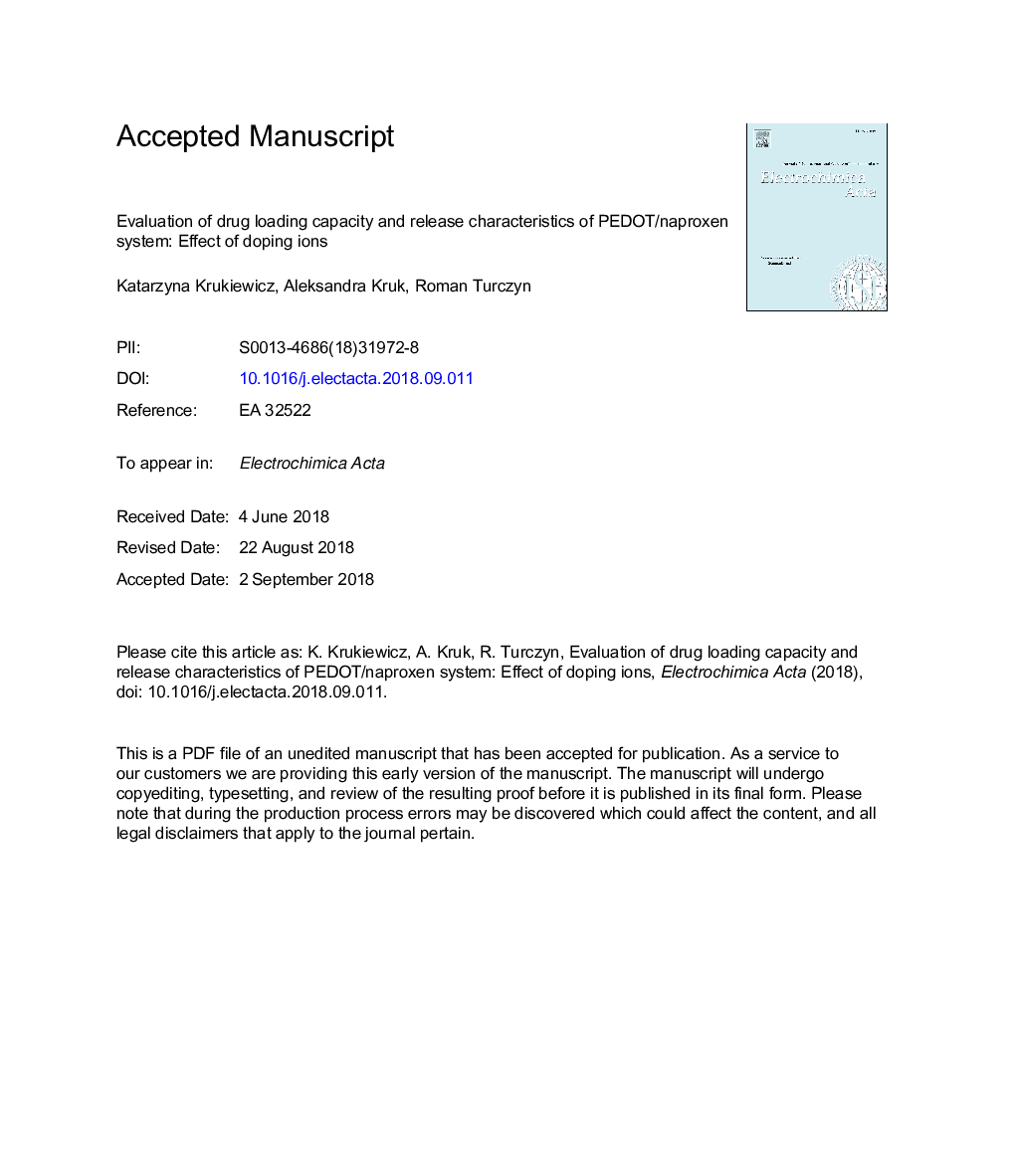| Article ID | Journal | Published Year | Pages | File Type |
|---|---|---|---|---|
| 10150419 | Electrochimica Acta | 2018 | 27 Pages |
Abstract
Conducting polymers are versatile and robust materials that have recently become attractive as controlled drug delivery systems. Possessing ion exchangeable properties, they can serve as carriers for numerous biologically active species, showing particular applicability in neural tissue engineering and regional chemotherapy. In the pursuit of the design of the most effective controlled drug delivery system, we aimed to compare the performance of the conducting polymer-based matrix as a function of doping anion, using chloride, perchlorate and dodecyl sulfate, respectively, as the primary dopants. Due to their different ion radius and mobility, selected ions were found to provide substantial changes into polymer characteristics, having strong effects into the uptake and release of a model drug, naproxen sodium salt. PEDOT/ClO4 matrix, particularly, was found to possess superior properties providing highest mass of the formed polymer (103.45â¯Â±â¯10.09â¯Î¼gâ¯cmâ2), charge storage capacity (44.9â¯mCâ¯cmâ2) and ion exchange capacity (0.122â¯Â±â¯0.003â¯Î¼molâ¯cmâ2), leading also to the highest amounts of loaded (0.024â¯Â±â¯0.002â¯Î¼molâ¯cmâ2) and released (from 0.71â¯Â±â¯0.10â¯Î¼gâ¯cmâ2 to 1.61â¯Â±â¯0.59â¯Î¼gâ¯cmâ2) drug.
Keywords
Related Topics
Physical Sciences and Engineering
Chemical Engineering
Chemical Engineering (General)
Authors
Katarzyna Krukiewicz, Aleksandra Kruk, Roman Turczyn,
